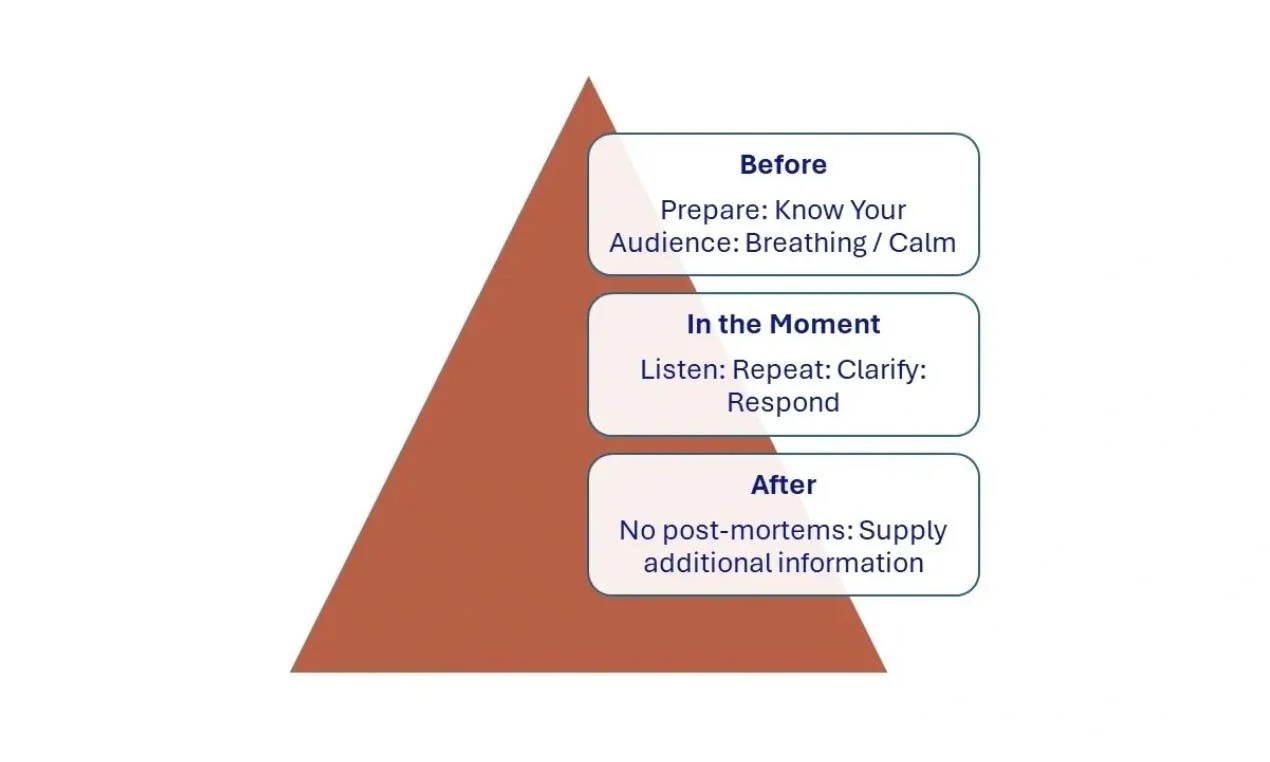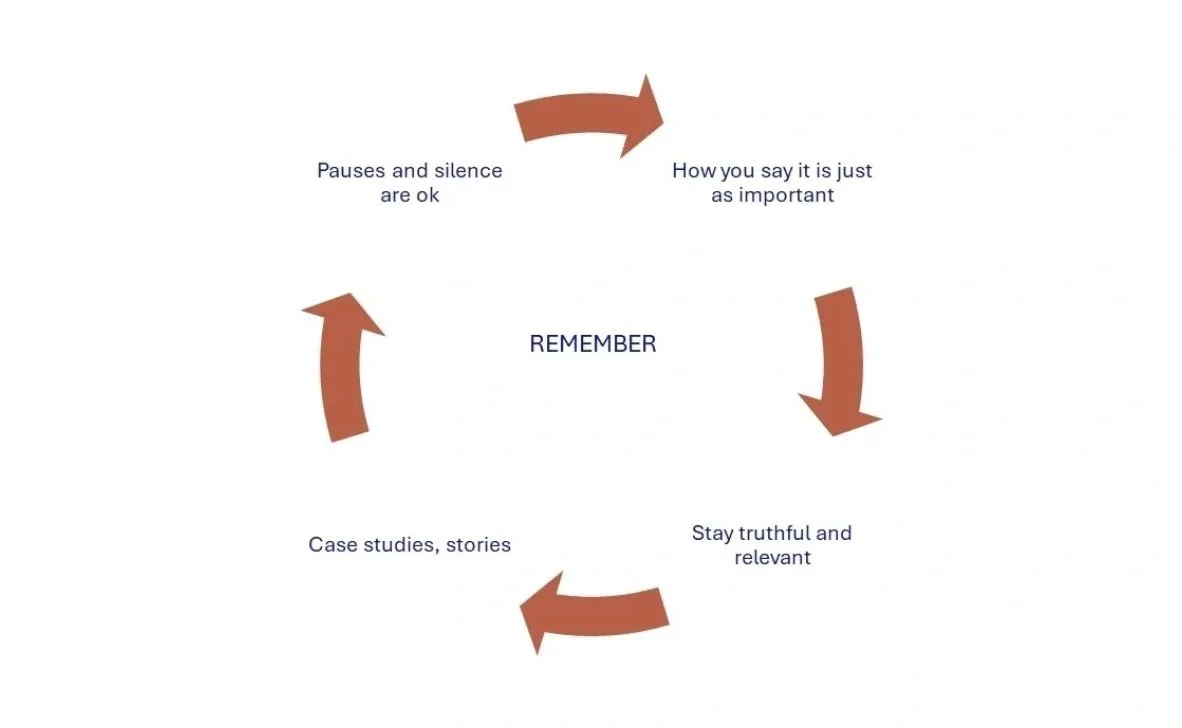Thinking On Your Feet
Listen | Clarify | Repeat | Respond
I have always admired people that seem to have no trouble at all in thinking and responding on their feet. Thrown a curve ball, in a meeting or other interaction and, from seemingly nowhere, they pull out a great response.
Darn it! Why can’t I be like them?!
Too often, I used to walk away from the same experiences, beating myself up. “Why didn’t I say, x, y and z. I knew the answer I just couldn’t locate it in my brain at the time.” I would spend hours conducting a post-mortem and wondering what the other person will be thinking after it all.
Of course, the other person will not be burning a huge amount of energy scrutinizing the interaction (a very important thing to remember in so many parts of your life).
Still, it remains imperative that we maintain a good sense of self, value and esteem. So, how can you become better at thinking and responding on your feet?
Over time, I have learnt to do some things prior to a situation arising where you are put on the spot, in the moment and post the moment. Let me break them down for you.
Before
Prepare | Know Your Audience | Breathing and Staying Calm
The more you can prepare heading into meetings, workshops etc the better.
Anticipating what might arise, allows you to gather your thoughts, having information on hand if required.
Know your audience. Who will be there? Are there tricky people in the room?
If you are heading into a difficult meeting or feeling anxious at all about being put on the spot, take yourself away for 5 minutes and do some breathing exercises.
Remain mindful of your breathing throughout it will help you keep calm(er).
Keeping your breathing under control, keeps your heart rate in check, reducing a rush of blood to the brain, allowing your mind to stay relatively clear.
You will absorb information more easily. You may surprise yourself as to how quickly you can reach into your memory bank for any information asked of you.
If this is an issue for you (or even it is not), highly recommend engaging with Apps such as Calm, Headspace or Balance. Connecting with these great resources can make a big difference.
In the Moment
Step 1 LISTEN:
Staying focused in discussions is incredibly important.
You can pick up on what is being said, what is not being said, people’s body language and the overall direction of the conversation.
It will help take the element of surprise away from the moment.
Step 2 REPEAT:
So the question lands ...
Paraphrasing the question back to the person asking is a great way to not only buy some time but provides time for your brain to process the question.
So, what might be a weird question initially might start making sense as you hear yourself playing it back.
Step 3 CLARIFY:
When you have paraphrased the person is going to either say “Yes that is right” or “No I meant this … “
Again listen. Is there a key phrase?
Use this key phrase to clarify what the person is seeking.
Using pauses as you speak allows your brain to catch up with your mouth (or the other way round!) It signals you are being deliberate and thoughtful in the way you are engaging in the discussion.
Step 4 RESPOND:
By this time, you will know if you have the information to hand or not.
If you have the information, respond as briefly as you can.
Resist the urge to expand and go into too much detail. You may lose your thread and quite possibly your audience all in the one.
Honesty: If you don’t have the answer this is the time to be honest. Bluffing or making something up may only make things more difficult. The majority of people respect the truth. Commit to coming back to the person as quickly as possible. You are signaling that it is important and that you respect them.
Breathing: Throughout, as best as possible, keep your breathing in check. It will calm your heart rate, lessen the race of blood to the brain and allow you to listen and respond calmly.
And remember: the more you can be spontaneous and lean into opportunities to speak in the moment, the less daunting these experiences will become.
It is also useful to remember that when we are communicating, 55% of it is in fact non-verbal - think body language, 38% vocal ie tone and voice projection and the words used accounts for only 7% of the communication pie. So how you say it is arguably more important than what you are saying.
So keep your shoulders straight, look the person in the eye, speak clearly (don’t swallow your words) and smile!
Another useful thing to remember is that a few pauses or moments of silence can be powerful. It can signal that you are being thoughtful and deliberate.
If practical, keeping a small repertoire of useful relevant stories or case studies in your memory bank account can be super helpful to illustrate your thinking.
Conclusion
There are a lucky few in the world that revel in being put under pressure unexpectedly to respond to a left field question or request. Many of us, prefer to have time to consider (do some homework), synthesise and respond. In a fast paced business or corporate environment, the latter is not always possible.
So do yourself a favour, save and print this article, cut out the diagrams and use this time to synthesise so you can be better prepared when that ‘in the moment’ experience arises.
Finally, it can be empowering to work through challenges such as thinking on your feet with a Leadership Coach.
The challenge can sometimes be more complicated due to your own workplace dynamics and career experiences to date. Having a coach to partner with you can make an enormous and positive difference.





